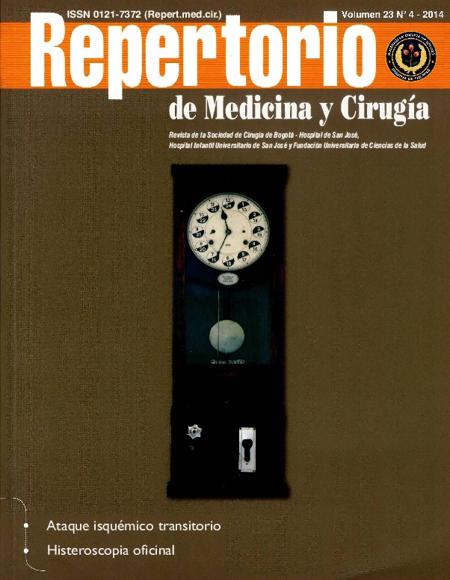Opioid analgesics in hospitalized patients: San José Hospital in Bogotá DC, Colombia
Analgésicos opioides en pacientes hospitalizados: Hospital de San Jpsé de Bogotá DC, Colombia
![]()
![]()

Show authors biography
Opioid analgesics are essential for the control of moderate to severe pain, which is a quality parameter in hospital care. Objective: to describe the use and indication of opioid analgesics in the hospitalized population of the San José Hospital in Bogotá DC in February 2014. Materials and methods: a retrospective study of drug use (MUS) in 559 patients over 16 years of age, measuring doses hospital defined (DDD / DHD) and opioid distribution pattern according to specialty, ICD10 diagnosis, use of validated pain assessment tools, opioid concomitance and interconsultation to the pain unit. Results: the main reasons for hospitalization were non-oncological and oncological surgical pathology with 73.7% and 8.4%. The most commonly used opioid was tramadol with 15.4 DDD / 100 beds / day. The consumption of morphine and parenteral hydromorphone is low with 2 and 1.3 DDD / 100 beds / day. Of the strong opioids, morphine is the most widely used, with general surgery, hematology and orthopedics being the main prescribers with 27.4%, 20.4% and 20.4%. The distribution of morphine in the population groups of each specialty is heterogeneous, presenting greater use in hematological patients with 39.1%. The scales of pain assessment at hospital admission and discharge were used in 48.6% and 5.1%. Conclusion: Institutional pain management guidelines should be strengthened. There is little adherence to the use of pain scales as a parameter of follow-up of analgesic therapy. Educational strategies will be created for the adequate management of pain.
Article visits 1530 | PDF visits 715
Downloads
1. WHO. Introduction to drug utilization research. Oslo: WHO; 2003.
2. Brennan F, Carr DB, Cousins M. Pain management: a fundamental human right. Anesth Analg. 2007; 105:205-21.
3. Cousins MJ, Lynch ME. The Declaration Montreal: access to pain management is a fundamental human right. Pain. 2011; 152:2673-4.
4. Safe use of opioids in hospitals. Sentinel Event Alert. 2012; (49): 1-5.
5. Dukes MN. Drug utilization studies: methods and uses. Introduction. WHO Reg Publ Eur Ser. 1993; 45: 1-4.
6. WHO Collaborating Centre for Drug Statistics Methodology. Guidelines for ATC Classification and DDD Assignment. Oslo: WHO; 2013.
7. Gómez Salcedo P, Herrero Ambrosio A, Muñoz y Ramón JM. Estudio de utilización de analgésicos opiáceos en un hospital general universitario. Rev. Soc. Esp. Dolor. 2009; 16 (7):373-80.
8. Vatanpour H, Sufi H, Salamzadeh J, Hajebi G. Drug utilization review of parenteral analgesic opioids in Amir-al-momenin hospital at 1390 in Zabol–Iran. Res Pharm Sci. 2012; 7(5): S475.
9. Duthey B, Scholten W. Adequacy of opioid analgesic consumption at country, global, and regional levels in 2010, its relationship with development level, and changes compared with 2006. J Pain Symptom Manage. 2014; 47: 283-97.
10. McNicol E. Opioid analgesics: administration issues, side-effect management, and equianalgesic conversion. Adv Stud Pharm. 2008; 5(1): 16-25.
11. WHO. Cancer pain relief: with a guide to opioid availability. 2 nd . Ed. Geneva: WHO; 1996.
12. Laporte JR, Tognoni G. Principios de Epidemiología del Medicamento. 2a ed. Barcelona: Masson-Salvat; 1993.












